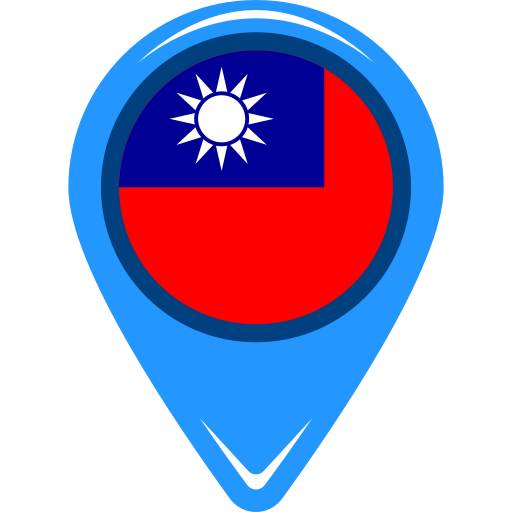When I first came to Taiwan to work, I thought I had to give up some of the government benefits I used to contribute to back home. But the truth is—you can continue paying into SSS, PhilHealth, and Pag-IBIG even while working overseas. I’ve done it myself, and it’s one of the best things I’ve done for my future.
If you’re also figuring out how to continue SSS, PhilHealth, and Pag-IBIG while abroad, especially in Taiwan, here’s what I’ve learned from my experience:

SSS (Social Security System): Coverage Even While Overseas
As an OFW, I was eligible for the SSS OFW Coverage Program, which lets us continue contributing to SSS and still access benefits like:
- Retirement and disability pensions
- Sickness and maternity claims
- Salary and calamity loans
How I Pay from Taiwan:
- Through remittance centers: I use I-Remit and LBC Express here in Taiwan. They’re accredited and reliable.
- Online via BancNet or UnionBank: You can link your bank account or pay through the SSS Mobile App.
- Ask for help: If needed, you can also ask someone back home to pay on your behalf using your SSS number.
Tip: You can also inquire at the MECO (Manila Economic and Cultural Office) in Taipei for assistance on SSS-related concerns.
PhilHealth: Voluntary Contributions for OFWs
Even while working abroad, I kept paying my PhilHealth contributions to maintain healthcare coverage for emergencies back home. The benefits are still accessible when I visit or return to the Philippines.
How I Pay from Taiwan:
- Through remittance centers: Some centers like Western Union, I-Remit, and LBC also accept PhilHealth payments.
- Online options: I use the Bayad Center Online or ask someone to pay through PhilHealth-accredited banks in the Philippines.
- Backup plan: You can assign a trusted family member to pay locally if needed.
Note: You’ll need to register as a voluntary member or update your status as an OFW in the PhilHealth system.
Pag-IBIG Fund: Regular Savings and MP2 from Abroad
I didn’t want to stop growing my savings and investments, so I continued contributing to Pag-IBIG Regular Savings and joined the MP2 Program—a great way to earn tax-free dividends.

How I Pay from Taiwan:
- Online via Virtual Pag-IBIG: This platform lets me view my contributions and pay via partner gateways.
- GCash/PayMaya (if available): These apps work only if your mobile number is still active in the Philippines.
- Remittance partners: Same as SSS and PhilHealth, I use I-Remit, Western Union, or LBC.
- MECO Taipei: They sometimes offer orientation or assistance if you’re new to these processes.
Steps to Maintain Contributions and Current Rates for OFWs in Taiwan
Once you’ve decided to keep your benefits active, here’s what you need to do and how much you’ll typically pay:
Steps to Maintain Contributions
- Register or Update as an OFW Member
Before paying, make sure your member status reflects that you’re working abroad. You can do this through the SSS, PhilHealth, and Pag-IBIG websites or by visiting the Manila Economic and Cultural Office (MECO) in Taipei. - Choose a Payment Method
- Online: I use BancNet, UnionBank, and Virtual Pag-IBIG depending on which agency I’m paying.
- Remittance Centers: IREMIT Taiwan, LBC, and Western Union have been reliable.
- Philippines-based Rep: You can also ask someone you trust to pay for you using your member details.
- Verify Your Payments
- I regularly log into my online accounts to check contributions.
- If something looks off, request a Contribution Verification Report from the agency directly.
Current Contribution Rates (2025)
SSS (Social Security System)
- OFW Contribution Rate: 14% of your Monthly Salary Credit (MSC)
- Minimum MSC: ₱10,000 → ₱1,400/month
- Maximum MSC: ₱30,000 → ₱4,200/month
- Note: OFWs pay the full amount (no employer counterpart).
- Service fee in Taiwan: Around NT$100 per payment.
PhilHealth
- Standard Rate: ₱200/month or ₱2,400/year
- You can pay in advance for up to two years if you prefer fewer transactions.
- Transaction fee in Taiwan: About NT$150
Pag-IBIG Fund
- Mandatory Contribution: ₱200/month
- MP2 Savings (optional): Contribute more for 5–6% annual dividends
- Payment fee in Taiwan: Around NT$150
Frequently Asked Questions
- Is it required to continue paying while working abroad?
No, it’s not mandatory—but it’s strongly encouraged to keep your contributions updated so you don’t lose your benefits and eligibility. - How much should I contribute?
Each agency has its own rate. For example, SSS voluntary contributions depend on your salary bracket. Pag-IBIG MP2 is flexible, starting at ₱500/month. - Can I update my membership details online?
Yes! Virtual Pag-IBIG and the SSS website allow profile updates. PhilHealth updates may require confirmation via email or a visit to MECO. - What happens if I stop paying?
Your accounts will remain but become inactive. You can resume anytime, but for things like loans and claims, consistent contributions matter.
Conclusion
Living and working in Taiwan is a huge step forward—but securing our long-term future matters just as much. Continuing my SSS, PhilHealth, and Pag-IBIG contributions gave me peace of mind. I know I’m not only earning for today but also protecting myself and my family for the future.
If you’re still figuring out how to continue SSS, PhilHealth, and Pag-IBIG while abroad, take it from someone who’s been there: it’s doable, it’s worth it, and it’s one less thing to worry about.
